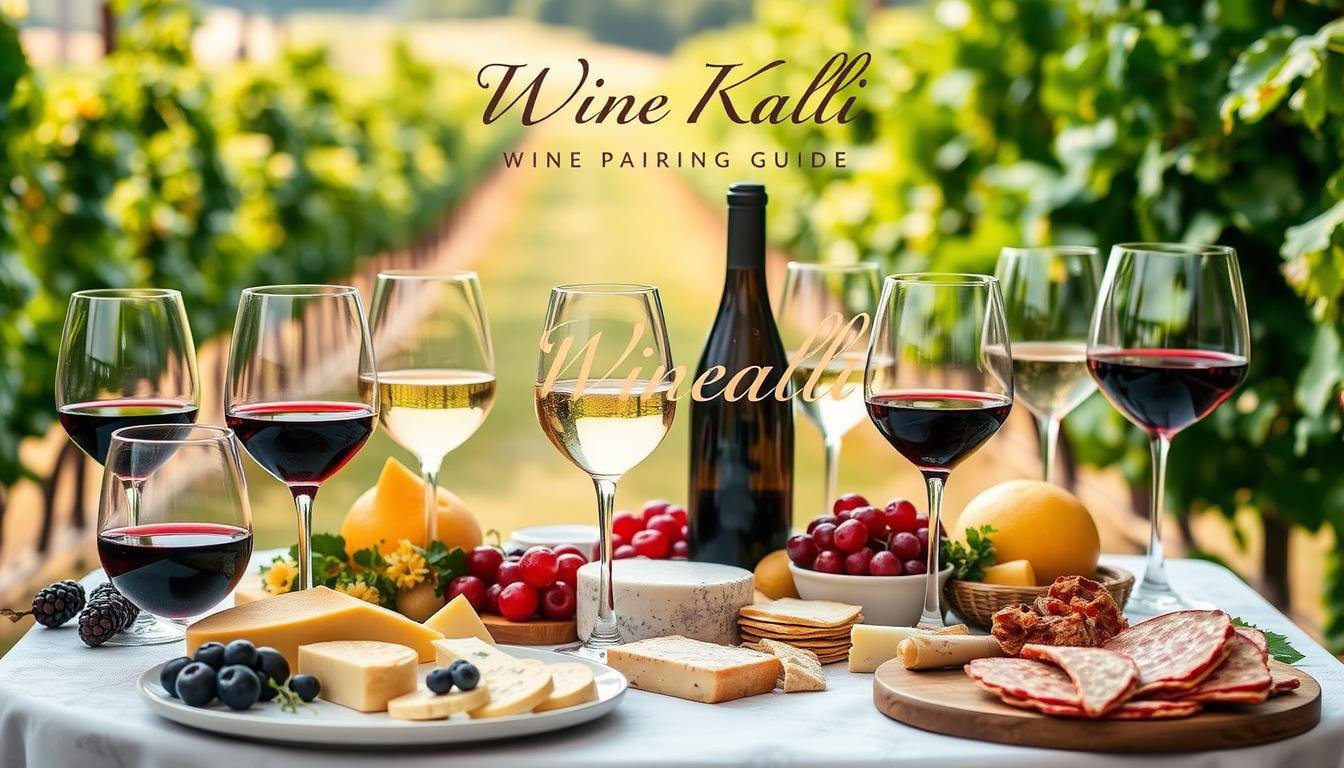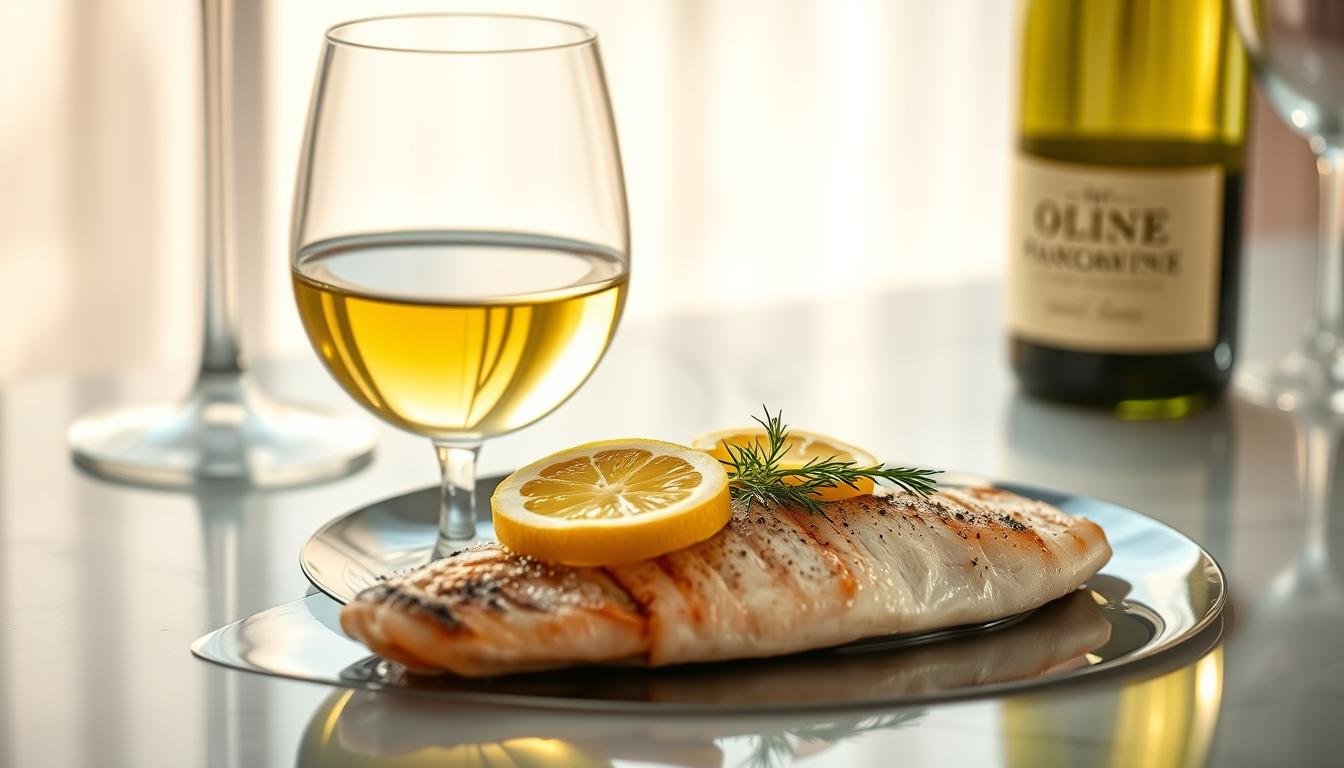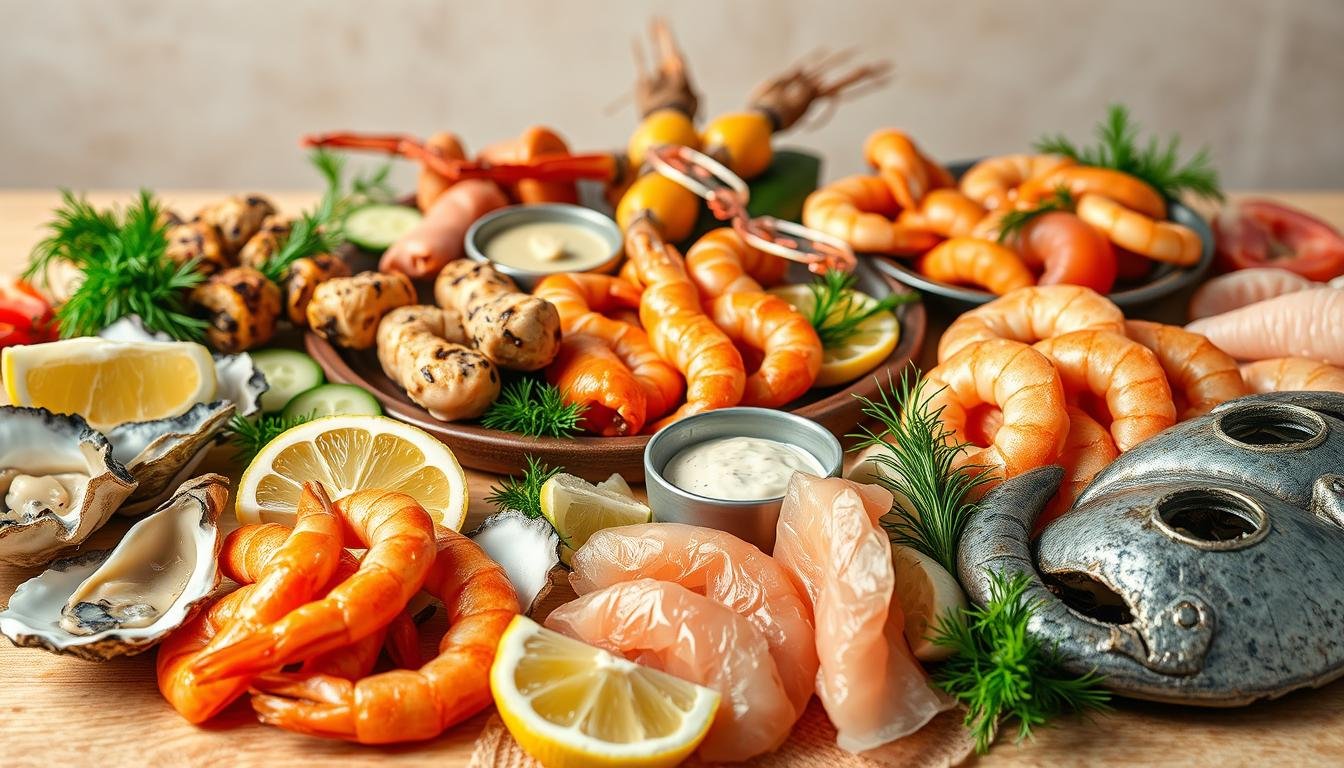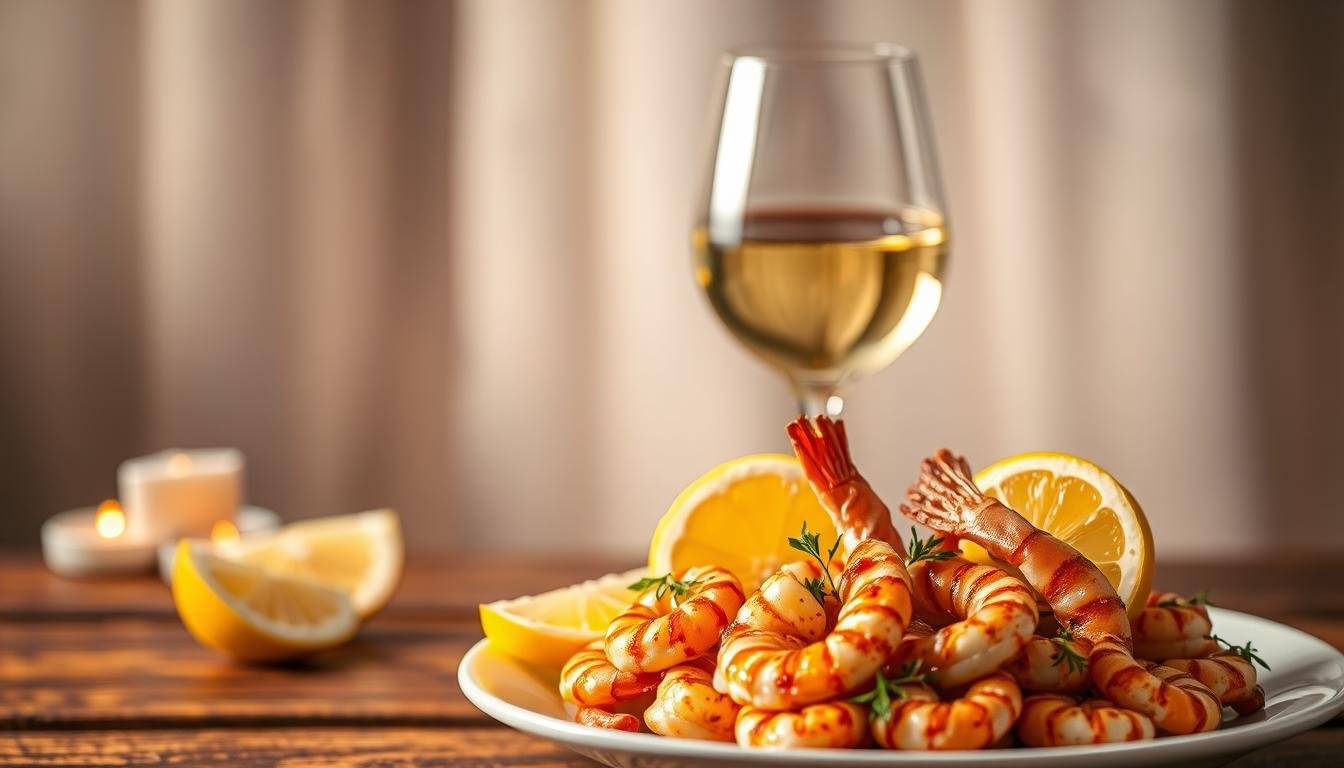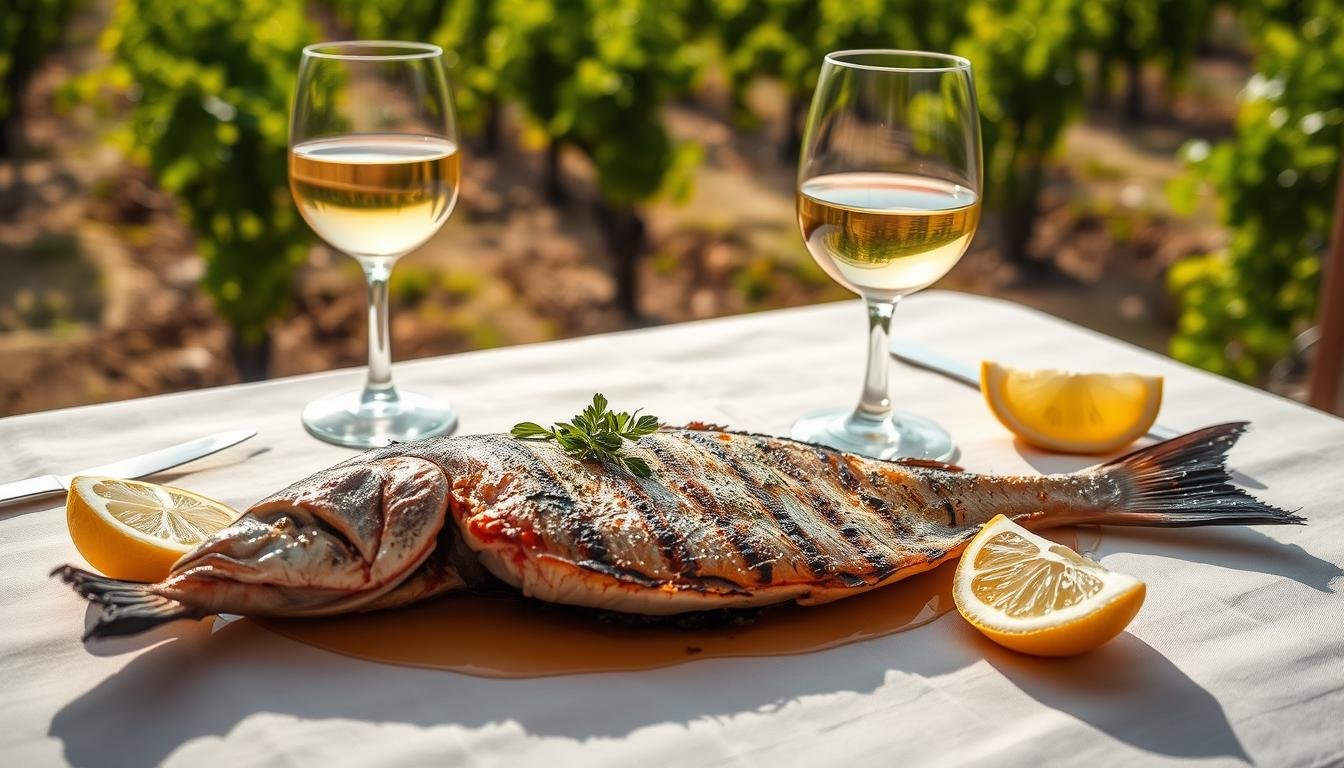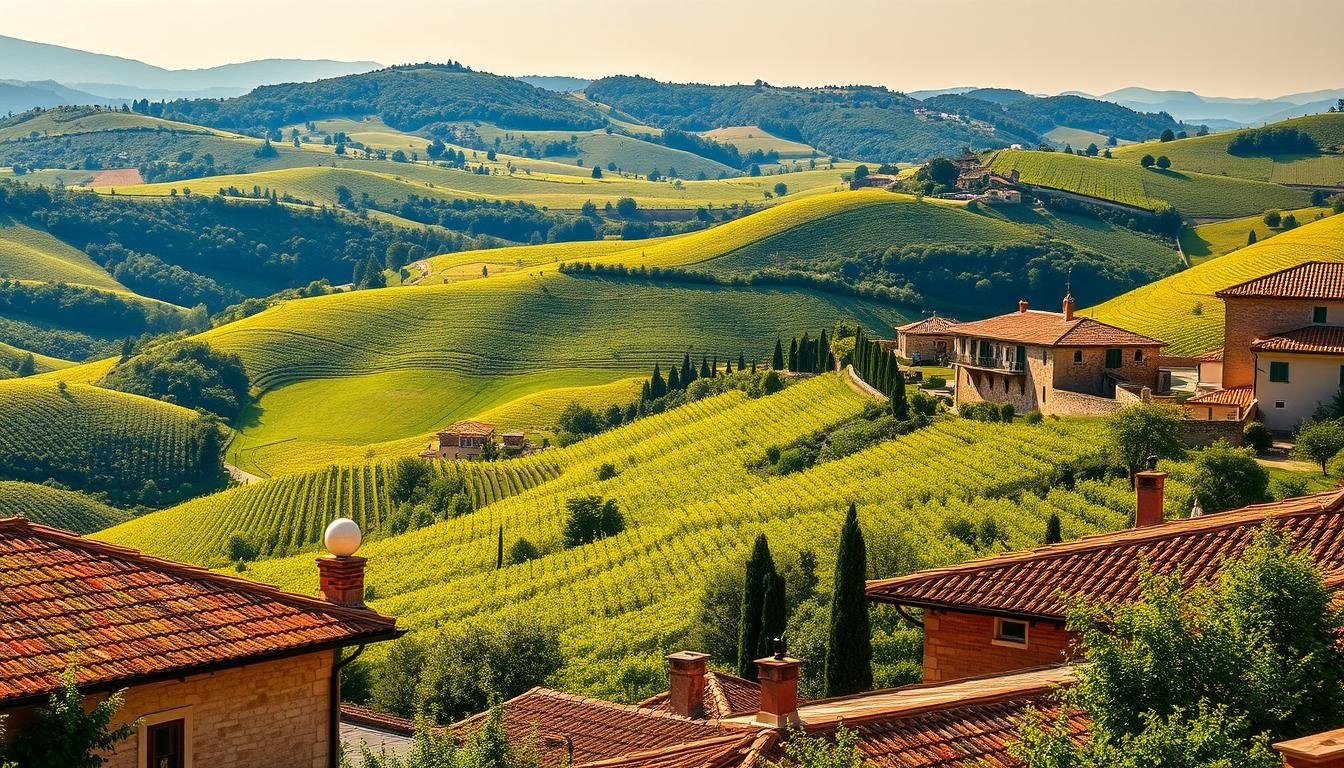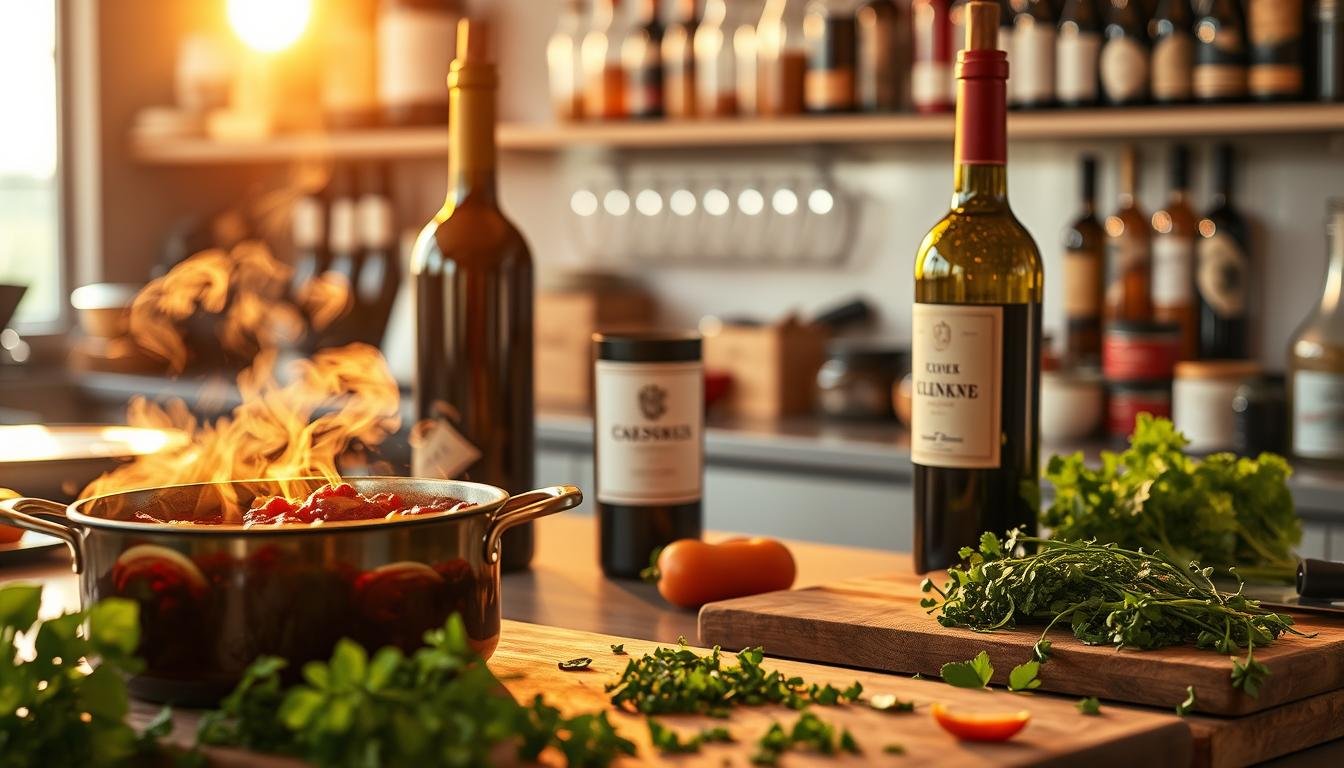Welcome to the world of wine pairing. It’s where knowing how wine and food go together can make meals special. Fiona Beckett says mastering this is key for a great meal. You’ll learn about wine pairing basics like acidity, sweetness, tannins, and body in this guide.
Choosing the right wine for your food is important. Light dishes go well with light wines, and heavy foods need stronger wines. For example, a crisp pinot grigio is great with summer salads or light seafood. A bold cabernet sauvignon is best for grilled steak. This guide will teach you how to pick the perfect wine for your meals.
This guide is for both beginners and wine lovers. It covers the basics of wine pairing and how to use them with your favorite dishes. You’ll learn about wine pairing principles and regional pairings. It’s all here to help you pair wine like a pro and enjoy your meals more.
Key Takeaways
- Understanding the basics of wine pairing is crucial for enhancing dining experiences.
- Light dishes generally pair well with lighter wines, while heavier foods call for more robust options.
- Acidity, sweetness, tannins, and body are essential factors to consider when pairing wine and food.
- Regional wine pairings can help you create perfect wine and food pairings.
- Wine pairing is a matter of personal preference, so don’t be afraid to experiment and find your own favorite wine and food pairings.
- A good wine pairing guide can help you navigate the world of wine pairing and provide you with the knowledge you need to pair wine like a pro.
Understanding the Basics of Wine Pairing
Wine pairing is key to a great dining experience. Matt Check says it’s about matching food and wine to highlight their best qualities. Think about acidity, sweetness, tannins, and body when pairing.
A wine pairing chart helps find the perfect match for your meal. Look at the wine’s flavor, like Riesling’s sweetness or Cabernet Sauvignon’s tannins. For example, Sauvignon Blanc goes well with fatty dishes, while Sauternes pairs with salty cheeses or spicy food.
Here are some tips for wine pairing:
- Match the wine’s weight to the food’s. Light wines like Pinot Grigio are good with salads and seafood. Full-bodied wines like Cabernet Sauvignon are better with hearty dishes.
- Think about the wine and food’s flavors. For example, Syrah’s smokiness pairs well with char-grilled steak.
- Don’t be afraid to try new pairings. Wine tastes vary, so it’s all about personal taste.
By following these tips and understanding wine, you can make your dining experience unforgettable. Whether you’re new to wine or a seasoned lover, knowing the basics of pairing is essential.
| Wine Type | Flavor Profile | Pairing Suggestions |
|---|---|---|
| Sauvignon Blanc | Crisp, citrusy | Seafood, salads, goat cheese |
| Cabernet Sauvignon | Full-bodied, tannic | Red meat, game, robust cheeses |
| Riesling | Sweet, fruity | Spicy dishes, desserts, Asian cuisine |
Identifying Flavor Profiles in Food
Understanding the flavor profiles of food is key in wine and food pairing. Look at the sweet, sour, bitter, and umami flavors in the dish. This helps create a perfect match. For instance, a rich red wine pairs well with a bold grilled steak.
White wine and seafood pairing is another great match. It brings out the delicate flavors of seafood. The goal is to balance flavors and textures for a harmonious taste experience. Creamy dishes go well with rich wines, while light wines suit delicate textures.
Sweet, Sour, Bitter, and Umami Explained
The four flavor profiles are the base of wine and food pairing. Sweet flavors need acidic wines, while sour ones pair with creamy wines. Bitter flavors match sweet wines, and umami flavors are enhanced by savory wines.
Textures and Their Impact on Pairing
The texture of food greatly affects its pairing with wine. Creamy dishes like lobster bisque pair well with rich wines, like Chardonnay. Light and crisp wines, such as Sauvignon Blanc, complement delicate textures, like seafood salads.
Regional Considerations in Ingredients
Regional ingredients and cooking styles also play a role in pairing. Spicy Sichuan cuisine pairs well with sweet and savory wines, like Riesling. Bold Indian cuisine flavors are complemented by full-bodied wines, like Cabernet Sauvignon.
Classic Wine Pairings You Should Know
Some wine pairings are timeless. A good guide will tell you red wine goes with red meat, and white wine pairs with seafood. These pairings are based on tradition and the flavors they bring together. Experts say it’s key to think about the wine and dish’s weight and taste.
A full-bodied red wine like Cabernet Sauvignon is great with red meat. Its tannins match the meat’s fatty taste. Meanwhile, a crisp white wine like Sauvignon Blanc is perfect with seafood. It cuts through the dish’s richness.
- Red wine with red meat: Cabernet Sauvignon with grilled steak, Merlot with lean beef
- White wine with seafood: Sauvignon Blanc with fish, Chardonnay with lobster
- Rosé with light dishes: Rosé with salads, Rosé with vegetarian options
Finding balance is the secret to great wine pairing. With these classic pairings, you’ll get better at it. Soon, you’ll create unforgettable meals.
| Wine Type | Classic Pairing | Why it Works |
|---|---|---|
| Red Wine | Red Meat | Complementary tannins and flavors |
| White Wine | Seafood | Crisp acidity cuts through richness |
| Rosé | Light Dishes | Light and fruity flavors add elegance |
The Role of Acidity in Wine Pairing
Acidity is key in wine pairing. It can make or break the taste of a dish. Matt Check says wine grapes have acids like malic, tartaric, and citric. These acids change how the wine tastes and ages.
A wine pairing chart helps you see how acidity levels match with dishes. For instance, wines like Sauvignon Blanc and Pinot Noir are great with many foods. The right temperature is also important. White wines should be at 45-50 degrees, while Pinot Noir is best at 55 degrees.
How Acidity Affects Flavor Compatibility
Acidity can change how we taste food, making sweet tastes less sweet. In wine and food pairing, balancing acidity with food richness is crucial. High-acid wines are perfect for fatty foods because they clean the palate.
Pairing High-Acidity Wines with Food
Wines like Sauvignon Blanc and Riesling have high acidity. They’re great with salty or fatty foods because they cut through richness. When pairing these wines, remember the wine pairing principles for a balanced taste.
The Influence of Tannins on Pairing Choices
Tannins are key in wine pairing. They are found in wine and dark chocolate. They interact with fats, salt, and spicy flavors. A good guide will suggest pairings based on tannin levels.
Wines with high tannins, like Cabernet Sauvignon, go well with fatty dishes. This balances the astringency of tannins. Creamy cheeses also pair well with these wines, softening the tannins.
- Rich, fatty dishes pair well with high-tannin wines
- Creamy cheeses complement tannin-rich wines
- Spicy foods can be balanced with a wine that has a hint of sweetness
By considering these factors, you can become an expert in wine pairing. Enjoy a wide range of delicious combinations.
Seasonal Wine Pairing Suggestions
Exploring wine and food pairing can be exciting, especially when you think about the season. Fiona Beckett says that seasonal pairings can make your experiences more varied and fun. The season is key in finding the perfect wine and food match.
In spring, light wines like Sauvignon Blanc, Chardonnay, and Chenin Blanc are great. They go well with salads and spring veggies. For summer, try high-acid whites like Pinot Gris and Chardonnay. They’re perfect for salads and grilled chicken, showing how white wine pairs well with seafood.
In autumn and winter, rich wines like Cabernet Sauvignon and Syrah are best. They’re great for hearty meals and cool weather, making them perfect for red wine and meat pairing. Some wines are better suited for each season, like Merlot for fall’s savory dishes or Syrah and Zinfandel for winter’s cozy meals.
When planning your seasonal pairings, think about the flavors and ingredients of the season. For example, asparagus, snap peas, and green beans pair well with Sauvignon Blanc. This wine’s crisp acidity and citrus flavors are a perfect match. Choosing the right wine for the season can make your dining experiences even better and help you find new favorites.
Pairing Wine with Cheese
Pairing wine with cheese involves many factors. A good guide can help you choose the right pairings. Matt Check says it’s a fun and rewarding experience, with lots of flavors to try.
Match delicate cheeses with light wines and strong cheeses with bold wines. For instance, a creamy goat cheese goes well with Sauvignon Blanc. A rich blue cheese pairs well with Cabernet Sauvignon. Here are some tips:
- Creamy cheeses match creamy wines, while harder cheeses need tannic wines.
- Sweet table wines or dessert wines balance the saltiness of some cheeses.
- Dry Champagne contrasts with the creamy, sweet Camembert cheese.
Some favorite pairings include:
| Cheese | Wine |
|---|---|
| Brie | California Merlot and Chardonnay |
| Camembert | Cotes du Rhone wine |
| Provolone | Chianti and Pinot Grigio |
Follow these tips for a great wine and cheese experience. Think about the cheese and wine flavors. Don’t hesitate to try new pairings and find your favorites.
Understanding Wine Labels and Regions
When picking wines for pairing, knowing about wine labels and regions is key. Wine labels tell you where it’s from, what grapes it’s made of, who made it, and when. This knowledge helps you choose wines that match your taste.
A “Chardonnay” wine is usually medium to full-bodied with flavors of citrus and orchard fruits. This makes it a good match for many foods. On the other hand, “Cabernet Sauvignon” wines are often full-bodied with dark fruit flavors and firm tannins. A wine pairing chart can help you understand these differences.
Wines from famous places like Bordeaux or Napa Valley are often pricier because of their quality. Knowing about these regions helps you pick wines that pair well with food.
Deciphering Wine Labels for Better Pairing
Wine labels might say if the wine is organic, vegan, or sustainable. This shows the winemaker cares about the environment and ethics. The alcohol level in a wine also matters, as it can change how the wine tastes and pairs with food.
Notable Wine Regions and Their Characteristics
Places like Bordeaux, Napa Valley, and Tuscany are known for their wines. Bordeaux wines are often blends of Cabernet Sauvignon and Merlot. Tuscany is famous for its Sangiovese wines. Knowing about these regions opens up new possibilities for wine pairings.
Hosting a Wine Pairing Dinner
Hosting a wine pairing dinner needs a good wine pairing guide. It makes sure your guests have a great time. Fiona Beckett says it’s fun and a chance to learn. First, decide on the number of courses and guests.
A 6-course meal is perfect for showing off wine pairing tips. Each course is picked to match the wine well.
It’s important to plan your budget for wine and food. A 6-course meal for 8 guests costs about $350, including wine. This works out to $37.50 for food and $9.09 for wine per person. To save money, look for expert wine pairing suggestions with different prices. Good choices include Bel Casel Prosecco, Lambrusco di Sorbara, and Brunori Torquis Rosso Piceno.
Here are some wine pairing tips for your dinner:
- Plan your menu in advance to ensure that each course complements the chosen wine.
- Consider the flavor profiles of each dish and select wines that will enhance and balance these flavors.
- Don’t be afraid to experiment and try new wine pairing combinations.
By using these wine pairing tips and expert wine pairing suggestions, you can make a memorable dinner. Have fun and be creative with your wine pairings. If you need help, don’t hesitate to ask a wine pairing guide.
| Course | Wine Pairing | Food Cost | Wine Cost |
|---|---|---|---|
| Appetizer | Bel Casel Prosecco | $38 | $12 |
| Soup | Lambrusco di Sorbara | $54 | $15 |
| Pasta | Brunori Torquis Rosso Piceno | $24 | $10 |
Common Mistakes in Wine Pairing
Wine pairing can be tricky, and many people make common mistakes. Matt Check says knowing and practicing can help avoid these errors. One big mistake is thinking a wine goes with all dishes of a certain type.
Another mistake is not listening to personal taste. Wine and food pairing is very personal. What one person likes, another might not. It’s key to think about your own taste when picking a wine for a meal. A wine pairing chart can help you choose.
Some common mistakes in wine pairing include:
- Pairing a bold wine with a delicate dish
- Serving wine at the wrong temperature
- Not considering the sweetness level of the dessert when selecting a dessert wine
Knowing these mistakes can make you better at wine pairing. The goal is to find balance and harmony between the wine and food.
Resources for Further Learning on Wine Pairing
Exploring wine pairing is exciting. Having reliable resources is key to learning more. A good guide offers expert tips, helping you choose the right wine for your meals.
Online learning is popular, with 63% of adults using it to learn new things, including wine. It’s perfect for learning at your own speed. Also, 75% of wine lovers enjoy wine tastings, a great way to find new wines and learn pairing tips.
For a structured learning path, consider certification programs like the Wine & Spirit Education Trust (WSET). They provide detailed guides and expert advice. These programs boost your wine knowledge and confidence in pairing wines. Whether you’re new or experienced, there’s plenty to learn.
Recommended Learning Paths
The Wine Scholar Guild (WSG) offers courses on wines from France, Italy, and Spain. The Court of Master Sommeliers (CMS) provides sommelier certification for those in the hospitality field.
Using these resources and a good guide will make you more confident in pairing wines. Remember, the best way to get better is to experiment and enjoy it. With practice, you’ll become skilled in wine pairing, making your meals even more special.

